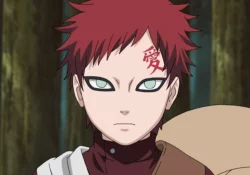Do you know the colors in Japanese? Talking about colors in nihongo can be more complicated than it looks. There are a couple of important points regarding its usage. There may be several ways to speak a certain color in Japanese.
Some colors were adapted from another language and were written in katakana. Not to mention how to use them as an adjective or not. In this article, we will try to quickly and basicly explain colors in the Japanese language.
The Colors in Japanese - Primary
Primary colors in Japanese are adjectives that end with the letter "i" [い]. But in no way is it wrong to write the colors without the "i" there are some rules that we will see. First let's see the table of primary colors:
| START | Kanji | Rōmaji | Portuguese |
| あかい | 赤い | akai | Red |
| あおい | 青い | hi | Blue green |
| きいろい | 黄色い | kiiroi | Yellow |
| しろい | 白い | white | White |
| くろい | 黒い | kuroi | Black |
We can notice the use of the kanji Iroi [色] in the color yellow, which means color, while the other colors do not need it. So basically it's like you're saying: Color yellow instead of yellow. We're not going to discuss these little quirks.
You may have noticed that green and blue are the same thing, wait for us to explain later.
adjective of colors in japanese
To color things up, like any adjective ending in "i" you simply put the noun in front.
| START | Kanji | Rōmaji | Portuguese |
| あかいくるま | 赤い車 | akai kuruma | a red car |
| きいろいほん | 黄色い本 | kiiroi hon | a yellow book |
| しろいマグ | 白いマグ | shiroi magu | a white mug |
| くろいペン | 黒いペン | kuroi pen | a black pen |
However, when you want to say that something "is" a certain color, you must drop the "i" from the word. Example:
| Kanji | Rōmaji | Portuguese |
| 車は赤です | kuruma wa aka desu | The car is red |
| 本は黄色です | hon wa kiiro desu | the book is yellow |
| マグは白です | magu wa shiro desu | the mug is white |
| ペンは黒です | pen wa kuro desu | the pen is black |
This rule only applies to the primary colors, as there are other colors that are not adjectives"i". You can also use the form without the "i" to refer to color.
You are not obliged to use the adjective "i" to refer to some things, such as:
| Kana | Kanji | Rōmaji | Portuguese |
| あかワイン | 赤ワイン | akawain | Red wine |
| くろねこ | 黒猫 | Kuroneko | Black cat |
Blue and Green in Japanese
In fact, there is the word Midori [緑] which means green. however, the word [青い] can mean either "blue" or "green" depending on the occasion. "Aoi" refers to all shades of green and blue as an entire spectrum.
You can even notice the similarity between the colors blue and green, as in a car, some say it's green others say it's blue, that's the point of the word.
So occasionally when we are going to call something green, Japanese people use Ao.
| Kana | Rōmaji | Portuguese |
| くさはあおです. | Kusa wa Ao desu. | The grass is green. |
| あおしんごう | aoshingo | green light (traffic sign) |
CuriosityJapanese traffic lights are actually a bit bluish compared to those in the West.
The Japanese also consider the ocean “Ao”, which makes sense considering that sea water is as green up close as it is blue from a distance.
But don't forget that there is a word to refer to the Green: "Midori" [緑].
Other Colors in Japanese
The other colors are not adjectives"i", and there are no complications.
| Kana | Kanji | Rōmaji | Portuguese | Grades |
| こん- いろ | 紺色 | kon or koniro | dark blue | a tone of Ao (blue green) |
| みずいろ | 水色 | mizuiro | light blue | literally "the color of water", a shade of To. |
| みどり | 緑 | green | green | even in the English sense – bright green and dark green, a shade of Ao |
| むらさき | 紫 | murasaki | violet / purple | there is no distinction between "violet" and "purple" in Japanese |
| オレンジ (オレンジいろ) | orange (orange color) | orange | a similar color is orange color (dark orange) | |
| ピンク | pinku | pink | a similar color is Momoiro"peach color" | |
| ちゃいろ | 茶色 | chairo | brown | literally "tea color" |
| はいいろ | 灰色 | hair | Grey | literally "grey color", another word is nezumiiro "color mouse" |
| きんいろ | 金色 | kin'iro | gold | kin is the "gold" metal |
| ぎんいろ | 銀色 | gin'iro | silver | gin is the "silver" metal |
| せいどう | seidou | Scarlet | ||
| しゅいろ | 深緑 | shuiro | green | Dark green |
| あかねいろ | akaneiro | Bronze | ||
| ももいろ | 桃色 | momoiro | Rosa | momo means peach, and peach is pink. |
| ベージュ | 黄緑 | be-ju kimidori | beige | Kimimidori means yellow green |
| グレー | Gure | Gray | ||
| だいだいいろ | 橙色 | Daidairo | Dark orange | |
| あいいろ | 藍色 | Aiiro | indigo blue | |
| こげちゃいろ | 焦げ茶色 | Kogechairo | Brown | |
| やまぶきいろ | 茶色 | Yamabukiiro | bright yellow | |
| ターコイズ | 銅色 | Ta-koizu | lilac | (Kanji is Akaganeiro) |

Many colors, is a normal word (like Gold and Peach) + [color 色]. So if you want to say that one thing has the color of another, you say [Word] + [Iro 色.]
The article is still halfway through, but we recommend also reading:
Example sentences for colors in Japanese
Unlike colors that have an adjective "i" in most cases you will need to use the particle "no" の to say that something has a certain color. Examples:
| Kana | Rōmaji | Portuguese |
| みどりのかばん | midori in the kaban | green bag |
| 紫の自転車 | Murasaki no jitensha | purple bike |
Remembering that the way of saying that something is a certain color remains the same. Example: 自転車は紫です- Jitensha wa murasaki desu.
E To ask "what color" is a thing, you can use the word question nani-iro.
| Kana | Rōmaji | Portuguese |
| 何色ですか. | What color is it? | What color is this? |
| オレンジです. | It's orange. | And orange. |
Well, that was a little color explanation in Japanese. Hope you liked it, leave your comment, share and follow us on social media.









